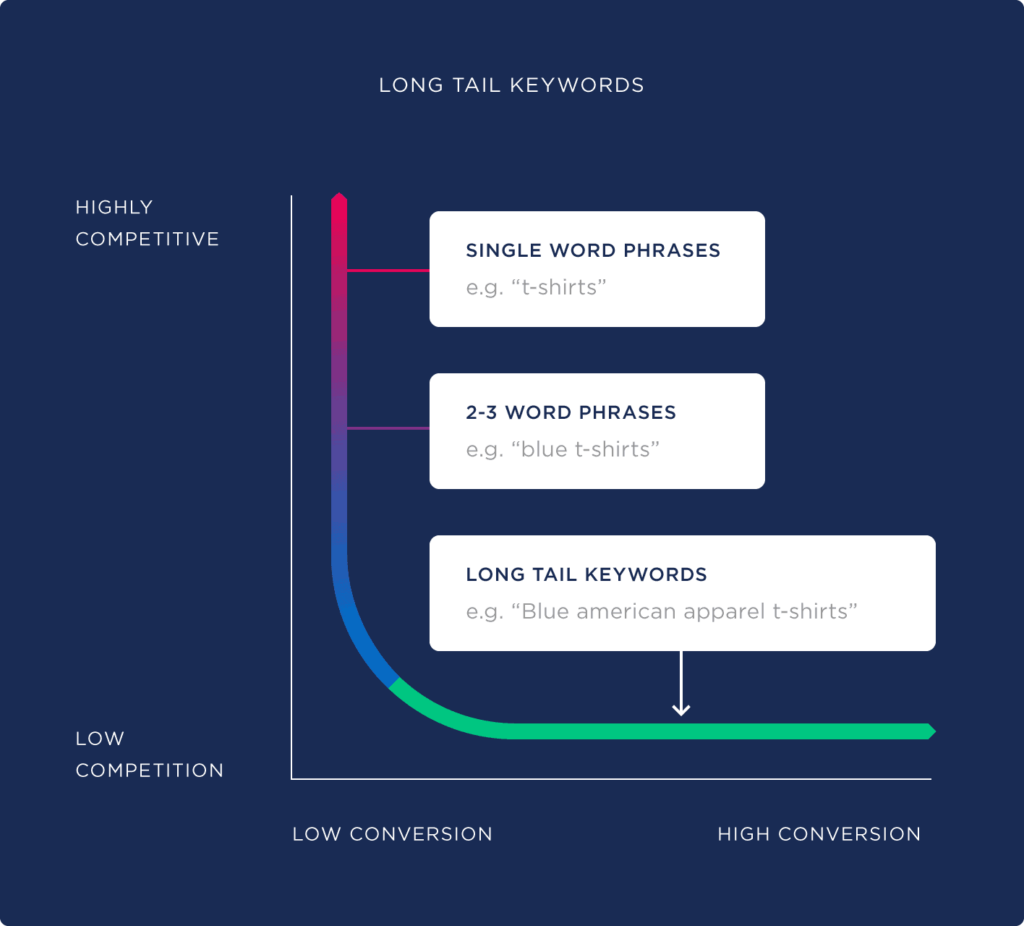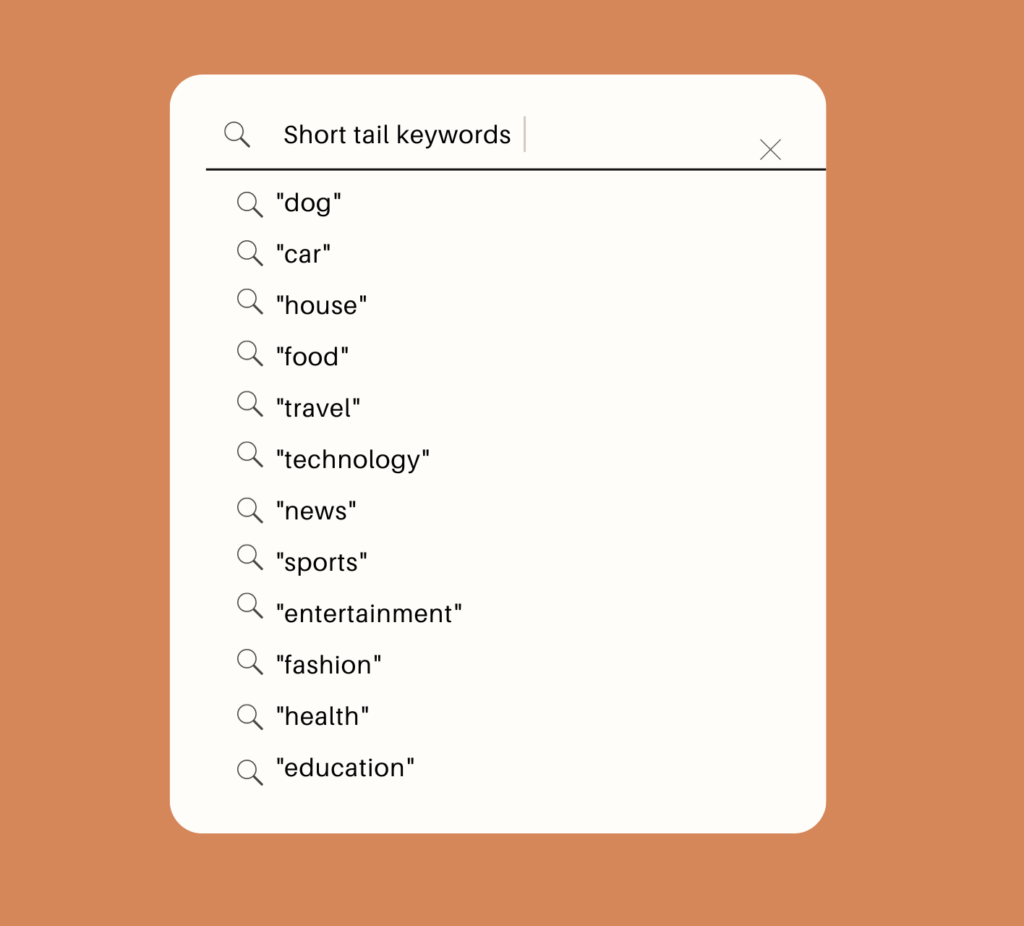Business growth is dependent on online visibility, which is the key to success. Your whole goal is to build a robust Search Engine Optimization (SEO) strategy where keywords emerge as the guiding stars.
Imagine search engines as vast libraries and keywords for SEO as the cataloging system that points users in the right direction. These seemingly ordinary words or phrases can bridge the gap between user intent and valuable content.
But what exactly are SEO keywords, and how do they work their magic? Let’s take a look.
Understanding Keywords in SEO Marketing
The best tools for digital marketing are search engines that serve as gateways to information, products, and services. At the core of this strategy lies the answer to, what are keywords? The pivotal words or phrases users type into search engines.
Whether you're a seasoned marketer or a business owner, understanding the intricacies of keywords is the cornerstone of crafting an effective online presence. How does keyword selection play into a successful digital marketing plan?
What Are Keywords in SEO?
Keywords in the realm of SEO are the words or phrases that users type into search engines when looking for information, products, or services. These description keywords play a crucial role in connecting user intent with relevant online content.
By strategically incorporating these keywords for websites, you can increase the chances of your pages appearing in search engine results, driving organic traffic and potential customers to your site.
Types of Keywords

Understanding what is a keyword in SEO is essential. From the succinct power of short-tail keywords to the precision of long-tail variants, each type uniquely connects users with the information they seek. Let’s explore how to use SEO keywords.
Short-Tail Keywords

Short-tail keywords are concise and general search terms typically consisting of one or two words. While they have a high search volume due to their broad nature, they often lack specificity in user intent. For instance, "Halloween costumes" is a short-tail keyword. However, competition for these primary keywords can be fierce, making it challenging to rank well.
Long-Tail Keywords

Long-tail keywords, on the other hand, are more specific phrases that usually contain three or more words. They might have lower search volume compared to short-tail keywords, but they often exhibit higher conversion potential due to their alignment with more targeted user intent.
An example of a long-tail keyword is "creative DIY Halloween costume ideas."
These keywords in SEO cater to users who are closer to making a decision or seeking in-depth information. To find the right long-tail keywords for your business, consider exploring our blog about choosing the right keywords.
Importance of Keyword Analysis
Keyword analysis is a strategic compass to help you identify your next steps. Imagine it as a roadmap to understanding what users are searching for and how you can align your content with their needs.
Keyword selection isn't just about randomly picking words; it's a calculated exploration of search behavior that guides your content creation and optimization efforts.
Role of Keyword Analysis in SEO
Keyword analysis serves as the foundation for effective SEO strategies. It involves researching and learning how to use keywords for SEO to optimize your content around.
This process is essential for understanding what your target audience is searching for and tailoring your content to match their needs.
Competitor Keyword Analysis
Your digital strategy should always stay competitive in the industry. Studying your competitors' keyword strategies can provide valuable insights into effective SEO practices.
You gain valuable insights into your business operations by dissecting your rivals' keyword strategies. For example, you can uncover the search terms that are driving traffic to their websites and get a clearer picture of what resonates with your shared audience.
This practice isn't about mere imitation; it's about leveraging their successes and identifying gaps you can fill with your unique value proposition.
Identify Key Competitors
When executing competitor keyword analysis, the first step is pinpointing your primary rivals within your industry or niche. These should be competitors that have established themselves as strong contenders in search engine rankings.
They consistently appear on the first page of search results for relevant keywords. By identifying these key players, you gain insight into the landscape you're operating within and can better tailor your strategies to stand out.
Select Competitor Analysis Tools
What are keywords in SEO used by competitors? Leveraging specialized tools is essential to dissect your competitors' strategies in detail. Premium tools like SEMrush and Ahrefs offer dedicated competitor analysis features that provide a comprehensive view of their primary keyword usage, niche keywords, rankings, and backlinks.
While some free tools might offer basic insights, these premium options empower you to delve deeper into the intricate details of your competitors' SEO strategies. The insights gained from these tools can shape your approach and give you a competitive edge.
Analyze Organic Keywords
Exploring the list of SEO optimization keywords from your competitors unveils valuable information about their search engine performance. This list essentially reveals which keywords are driving traffic to their websites.
Using keywords for SEO, apply filters to isolate keywords that are directly relevant to your niche and exhibit significant search volume. These are the keywords that hold the potential to attract a relevant audience to your own content.
Identify Content Gaps
One of the key benefits of competitor keyword analysis is the identification of content gaps. These gaps emerge when your competitors rank for specific SEO phrases you are not.
Recognizing these gaps provides opportunities to fill them with your content. By addressing these areas, you can offer users better or more comprehensive solutions to their queries, positioning yourself as a valuable resource within your industry.
Explore Competitor Backlinks
Backlinks are a cornerstone of SEO success, as they signal the authority and credibility of a website. Exploring your competitors' backlink profiles is crucial to understanding their online reputation and their collaborations within the industry.
This exploration can potentially lead to collaboration opportunities, where you can reach out to websites linking to your competitors' content and propose mutually beneficial partnerships.
Study Competitor Content
Visiting competing websites and closely analyzing their content provides insights into the quality, depth, and engagement level of their articles. Explore what types of content resonate with their audience and refine your own content creation strategy.
This analysis extends beyond keywords and examines the overall user experience, allowing you to tailor your content to meet the needs and preferences of your target audience.
Keyword Research Process
Keyword research empowers you to explore the mystery of user intent. This involves understanding your audience, uncovering their language, and identifying the search terms that resonate with their queries.
Read on for a step-by-step exploration of the keyword research process, equipping you with the tools and insights to direct your content creation efforts toward maximum visibility and engagement.
Step 1: Identifying Your Niche
The foundation of effective keyword research rests on a solid understanding of your niche. Start by defining a relevant niche for your business that resonates with your target audience's interests, preferences, and pain points.
Gain insights into your potential customers' online behavior, seeking to comprehend the topics that captivate them. This initial step involves immersing yourself in your audience's world, honing in on their desires, challenges, and the information they seek.
Step 2: Generating Seed Keywords
With your niche established, it's time to generate seed keywords that encapsulate the core topics of your business. These broad terms serve as the starting point of your keyword research. Think of them as the primary branches of a tree that will eventually sprout into more specific variations.
Leverage keyword research tools like SEMRush and Ahrefs to uncover potential seed keywords and gain insights into their search volumes. These tools offer a panoramic view of the keyword landscape, helping you identify the terms that hold the most potential for driving traffic.
Step 3: Expanding with Long-Tail Keywords
Seed keywords lay the foundation, but the real magic happens when you expand them into long-tail variations. Long-tail keywords are the more specific phrases that users are likely to search for when they have a clear intent.
These longer, more targeted phrases attract users who are closer to making decisions or seeking detailed information. Reference our blog for further insights on leveraging this traffic into sales.
Step 4: Analyzing Search Intent
Keyword research isn't solely about finding words; it's about understanding the underlying intent behind those words. Search intent defines the purpose a user has while entering a query:
- Informational: Seeking information
- Navigational: Looking for a specific website
- Transactional: Ready to make a purchase
Aligning your chosen website keywords SEO with the right search intent is pivotal for engagement and relevance. Also, be attuned to Google's updates that influence the ranking of informational articles, as these shifts impact how you strategize and create content to match user intent.
For example, Google has released updates that impact the ranking of informational articles, particularly those in the "how-to" category. This update makes it more challenging to achieve visibility with common informational how-to articles. Your SEO strategy and keyword implementation should pivot with these updates.
Implementing Keywords in SEO Content
The art of effective keyword integration is far from a mechanical process; it's a delicate balance between catering to search engines and delivering valuable content to your audience. Join us as we unlock the secrets to ensuring your content resonates with search engines and captivates your target audience.
On-Page SEO Optimization
When it comes to optimizing your content for SEO, the strategic integration of SEO for keywords takes center stage. Embed these keywords naturally into your titles, headings, and body content. The goal is to appeal to search engines and provide a seamless reading experience for your audience.
Avoid the pitfalls of keyword stuffing, as it hampers readability and risks search engines flagging your content. For an in-depth guide on how to optimize your content effectively, delve into our comprehensive resource.
Meta Tags and Descriptions
Your content's first impression in search engine results often relies on well-crafted meta titles and descriptions. These snippets should not only be informative but also optimized with relevant keywords.
Doing so not only enhances your content's click-through rates but also influences its overall visibility. For an in-depth understanding of crafting compelling meta tags, explore our blog on the topic to gain insights into creating magnetic snippets that draw users to your content.
Image Alt Text and File Names
Don't overlook the potential of images in SEO. Utilizing keywords in image alt text and file names enhances your content's accessibility, making it more appealing to search engines and users alike.
Remember, images should align seamlessly with your keywords and complement the content they accompany.
Monitoring and Adapting Keyword Strategy
Once keywords are chosen and implemented, the path to sustained SEO success involves a continuous process of monitoring and adapting your keyword strategy. Stating attuned to shifts in search engine algorithms and user behavior is paramount.
From tracking SEO and keyword rankings to crafting dedicated pages and aligning with algorithmic changes, discover how to uncover the key to enduring SEO prowess.
Tracking Keyword Rankings
Consistent monitoring of your keyword rankings is essential for staying on top of your SEO game. Tools like Moz enable you to keep a finger on the pulse of your keyword performance over time.
This monitoring empowers you to adapt your strategy in response to shifts in search engine algorithms and changes in user behavior, ensuring that you remain visible and relevant.
Creating Dedicated Pages
An effective strategy involves creating dedicated landing pages for specific keywords. This laser-focused approach, with one keyword per page, caters to the search engines' algorithmic preferences and resonates deeply with users seeking precisely what you offer.
Adapting to Algorithm Changes
Search engine algorithms are in a constant state of evolution. Adapting your keyword strategy to align with the latest trends is pivotal for maintaining your competitive edge.
Stay up to date with SEO trends and algorithm changes to ensure that your content remains aligned with the constant changes, maximizing your chances of visibility and engagement.
Learn About the Power of Keywords and SEO Strategy for Your Company
Let's break it down: what are SEO keywords? They are like the glue that ties everything together. As you put these keywords and SEO into action, just remember that it isn't about robotic rules; it's about creating stuff that matters to actual people looking for answers. You will find SEO success as you uncover keyword analytics and change your SEO keyword strategy to fit your target audience better.
Elevate your brand's visibility, engage your target audience, and outshine the competition with Loupe & Blade's expert SEO services. Our team of seasoned professionals is here to tailor a comprehensive strategy that aligns with your unique goals and aspirations.
Don't let your digital potential go untapped – harness the power of SEO keywords to make your brand shine in the digital landscape. Contact us today for a discovery call.

No Comments.